
Shutterstock
Think you know everything about hippos? Think again! These massive creatures, often seen lounging in Africa’s rivers, are full of surprising traits and fascinating behaviors that go far beyond their laid-back appearance. Despite looking like gentle giants, hippos are among the most dangerous animals in the wild, with powerful jaws and a fiercely territorial nature.
Let’s explore the world of hippos and uncover a range of surprising facts that reveal just how complex and important these massive animals really are.
They’re Not Related To Horses

Shutterstock
Despite their name, which means “river horse,” hippos are actually more closely related to whales and dolphins than to horses. They share a common ancestor with cetaceans from about 55 million years ago, placing them in the same evolutionary group. This shared ancestry explains why hippos and whales have similar traits, like thick skin to help with water loss and protection. They also have unique ways of moving through water, showing how they’ve both adapted to aquatic environments over time.
Second Largest Land Animal
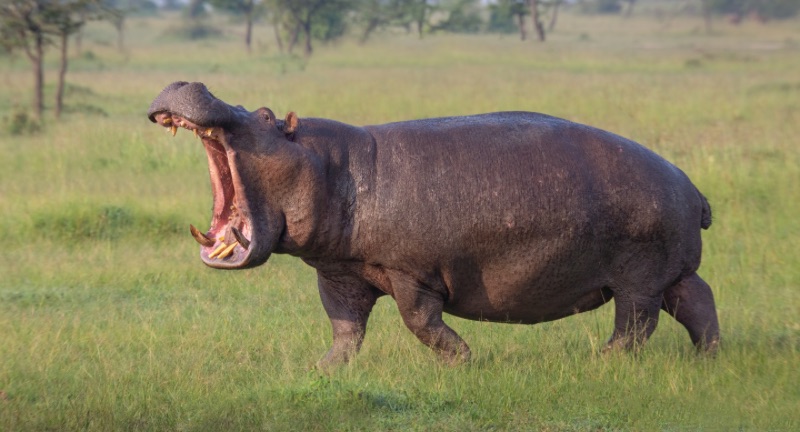
Shutterstock
Hippos are the second largest land mammals, second only to elephants in size. Adult males can weigh anywhere from 3,500 to 9,900 pounds (1,600 to 4,500 kg), while females are slightly smaller. Their massive size acts as a deterrent against most predators, making them one of the dominant species in their habitats. Despite their bulk, hippos are capable of surprising speed and agility, both in water and on land.
Largely Aquatic Lifestyle

Shutterstock
Hippos are semi-aquatic mammals, spending the majority of their day submerged in water to keep cool. They inhabit rivers, lakes, and swamps, where the water temperature is lower than the air temperature, protecting their large bodies from overheating. Hippos’ eyes, ears, and nostrils are positioned on top of their heads, allowing them to see and breathe while mostly submerged. This adaptation makes it possible for them to remain vigilant against potential threats without exposing their entire bodies.
Not Strong Swimmers
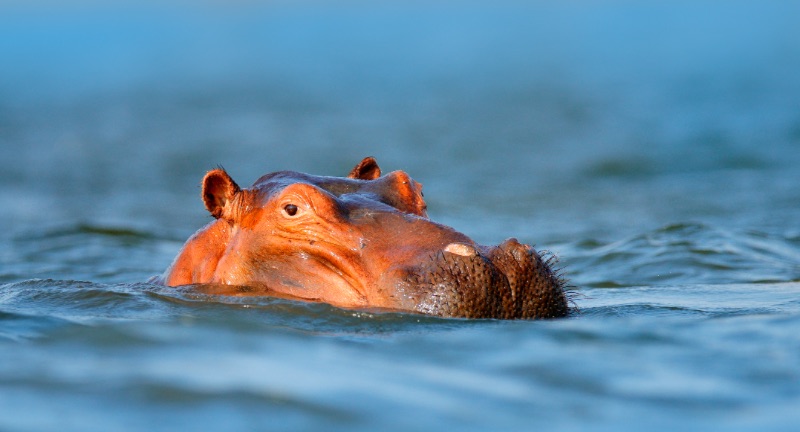
Shutterstock
Although they spend so much time in the water, hippos are not particularly good swimmers. They move through water by pushing off the bottom with their feet, effectively walking or bouncing along the riverbed. This method is made possible due to their dense bones, which prevent them from floating easily. Hippos can stay submerged for about five minutes before needing to resurface for air, an adaptation that supports their semi-aquatic lifestyle.
Herbivorous Diet

Shutterstock
Hippos are herbivores and primarily feed on grasses, consuming up to 88 pounds (40 kg) of vegetation each night. Despite their large size, hippos do not require a vast amount of food daily compared to other herbivores. They typically graze on short grasses near their water habitats, making nightly excursions to feed. Their diet is supplemented occasionally by fallen fruit, but they rarely consume aquatic plants, even though they live in water.
Territorial in Water
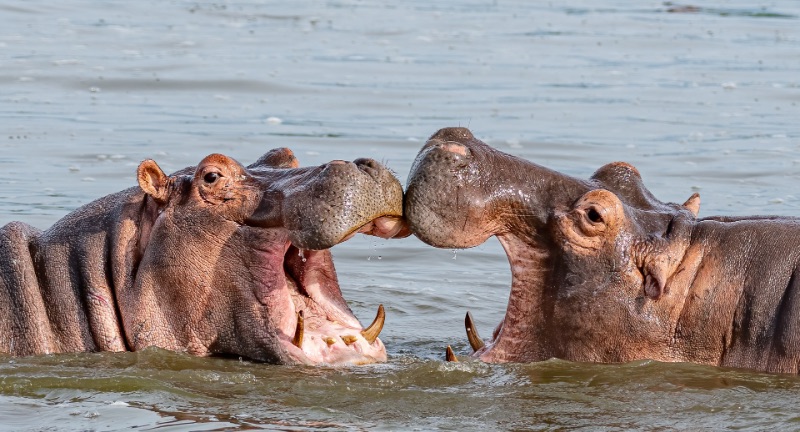
Shutterstock
Hippos are highly territorial when it comes to their aquatic habitats, particularly males who maintain control over a section of river or lake. They establish boundaries and defend these areas aggressively against rival males, using vocalizations, posturing, and physical confrontations. These territories often encompass a significant stretch of shoreline, ensuring access to females and resources. On land, hippos are less territorial, primarily because they spend less time there and are more focused on grazing.
Aggressive Nature
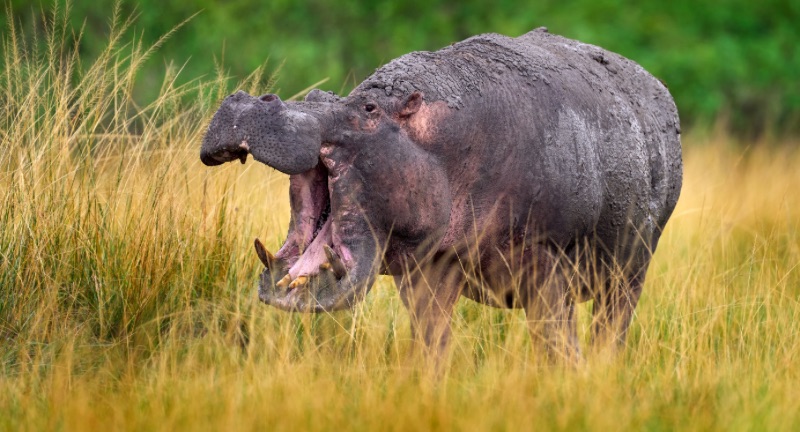
Shutterstock
Hippos have a reputation for being aggressive and dangerous animals. They are considered one of the most dangerous animals in Africa, responsible for more human fatalities than many other large mammals, including lions and elephants. A hippo’s mouth can open up to 180 degrees, and their powerful bite is strong enough to crush bones and even small boats. Their aggression is primarily driven by territorial defense and protection of their young, rather than predatory behavior.
Unique Vocalizations
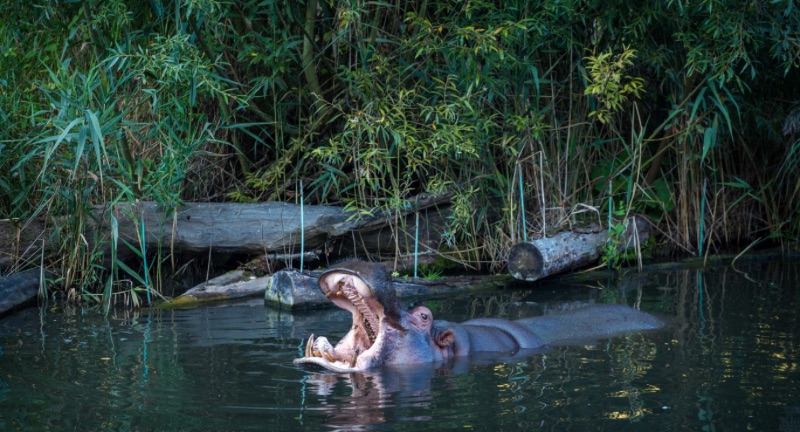
Shutterstock
Hippos communicate through a range of vocalizations, including grunts, roars, and a unique “wheeze honk.” This distinctive sound can be heard over a mile away and is used to communicate with other hippos within their pod and to assert dominance. Hippos are capable of making these sounds both above and below water, thanks to their specially adapted vocal cords. These vocalizations help maintain social structures within the group and signal the presence of territorial males.
Lifespan of Hippos

Shutterstock
Hippos have a relatively long lifespan, living between 40 to 50 years in the wild. Factors such as predation and human activities can influence their longevity, but they generally live longer than many other large mammals. In captivity, where threats from predators and environmental stressors are minimal, hippos can live well into their 60s. Proper care, diet, and medical attention contribute to their extended lifespans in zoo environments.
Social Structure
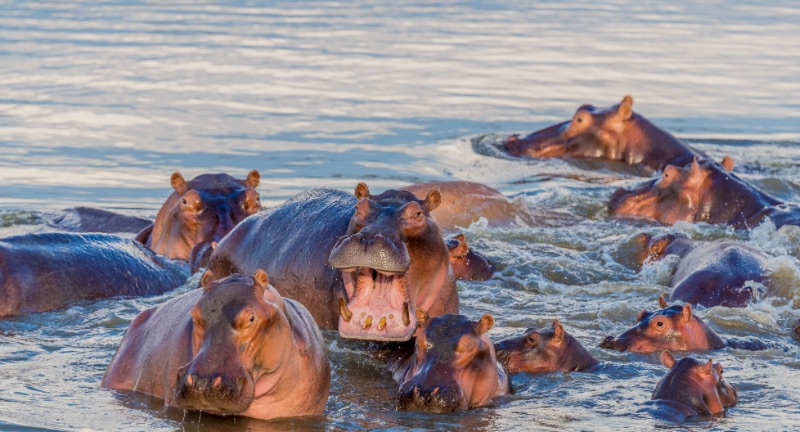
Shutterstock
Hippos are social creatures, often found in groups called pods, bloats, or herds, consisting of 10 to 30 individuals. These groups are typically led by a dominant male, who maintains order and protects his territory. Females and their offspring make up most of the group, with younger males either joining other pods or becoming solitary. The social structure provides safety, especially for younger hippos, and helps maintain a stable environment within their habitat.
Skin Secrets

Shutterstock
Hippos have thick skin that requires constant moisture, which is why they spend so much time in water. Their skin secretes a red, oily substance often referred to as “blood sweat,” which serves multiple functions. This secretion acts as a natural sunscreen, protecting hippos from the sun’s harsh rays and has antibacterial properties that prevent infections. Despite its appearance, this substance is not blood but a mix of acids that help maintain skin health.
Huge Teeth

Shutterstock
Hippos are known for their massive canine and incisor teeth, which can grow up to 1.5 feet (50 cm) long. These teeth are primarily used for defense and combat rather than eating. Hippos use their lips to grab and pull grass into their mouths, while their large teeth serve as formidable weapons against threats. The continuous growth of their teeth throughout their lives ensures that they remain sharp and effective.
Baby Hippos Born Underwater

Shutterstock
Hippos give birth underwater, which offers protection and a gentle environment for the newborn calves. A newborn hippo, weighing between 55 to 110 pounds (25 to 50 kg), can swim to the surface for its first breath soon after birth. The water helps support the calf’s weight, making it easier for the mother to care for her young. Female hippos are highly protective, keeping their calves close and nursing them for about eight months.
Role in the Ecosystem

Shutterstock
Hippos play a crucial role in their ecosystems by influencing both aquatic and terrestrial environments. Their grazing habits help control grassland vegetation, promoting plant diversity and preventing overgrowth. Additionally, hippo dung, rich in nutrients, acts as a natural fertilizer in rivers and lakes, supporting the growth of fish and other aquatic organisms. This nutrient cycling makes hippos vital contributors to the health and balance of their habitats.
Speed on Land
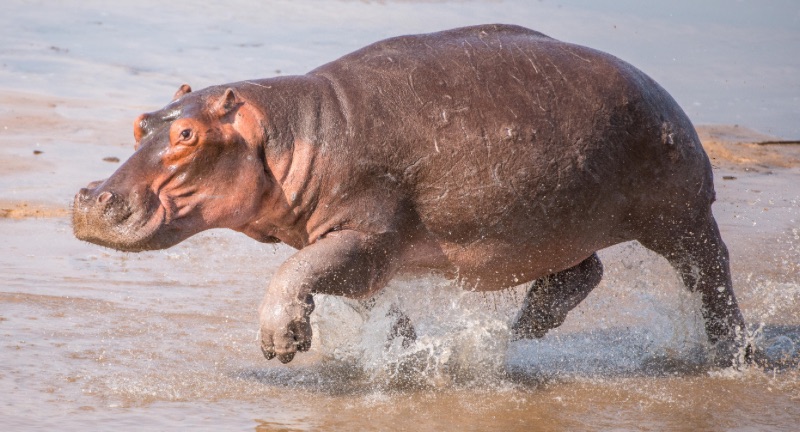
Shutterstock
Despite their size, hippos are surprisingly fast on land, capable of reaching speeds up to 19 miles per hour (30 km/h). This speed allows them to quickly escape threats or charge at perceived intruders, making them formidable despite their bulk. Their ability to run fast over short distances is a defensive adaptation against predators and other dangers. Although hippos prefer to avoid conflict, they can be highly dangerous when they feel threatened.
Eyes and Ears Adapted for Water Life

Shutterstock
Hippos have evolved with eyes, ears, and nostrils positioned high on their heads, a feature that is crucial for their semi-aquatic lifestyle. This adaptation allows them to keep most of their bodies submerged in water while still being able to see, hear, and breathe. It helps them stay cool and watch for predators without exposing themselves fully. These adaptations are essential for their survival in the wild, where vigilance is necessary.
Territorial Fights
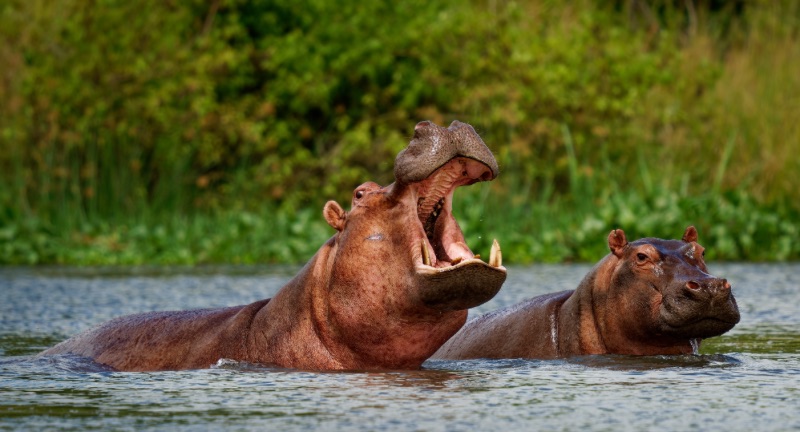
Shutterstock
Male hippos often engage in aggressive fights to establish dominance and control over specific territories within water bodies. These confrontations can be intense, involving lunges, head-butting, and biting, sometimes leading to severe injuries or even death. Such fights are most common during the mating season when competition for females is highest. Victorious males gain access to prime territories and the females within them, ensuring their genetic legacy.
Influence on River Channels
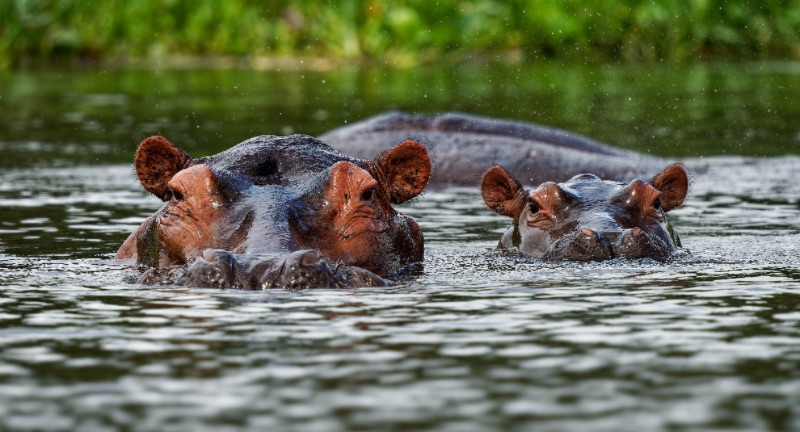
Shutterstock
Hippos play a significant role in shaping their environment by maintaining river channels through their daily activities. By wallowing in mud and moving through water, they create and maintain pathways that help direct water flow and prevent overgrowth of aquatic plants. This natural modification benefits other species by ensuring that water bodies remain open and accessible. Hippos’ impact on their habitat extends beyond their immediate presence, supporting biodiversity.
A Threatened Species
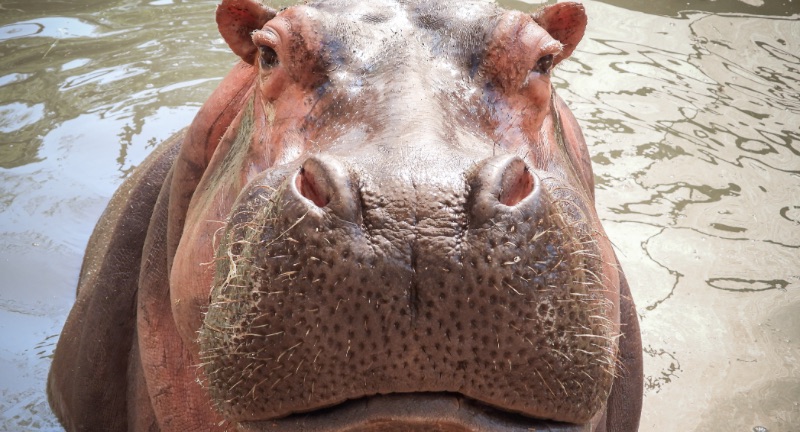
Shutterstock
Hippos are classified as vulnerable due to threats from habitat loss and poaching. Their teeth, which resemble ivory, are highly valued, leading to illegal hunting for the black market. Additionally, expanding human settlements and agriculture encroach on their natural habitats, limiting their living space and food sources. Conservation efforts aim to protect hippo populations through habitat preservation, anti-poaching laws, and public awareness campaigns.
Communication Through Dung
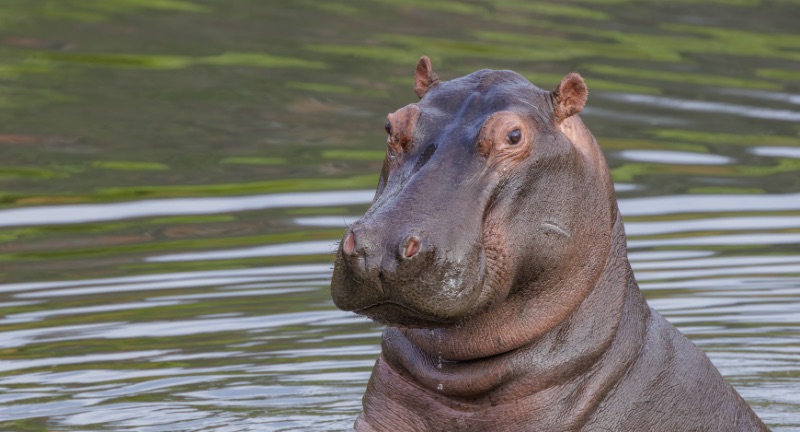
Shutterstock
Hippos use their dung to communicate and mark territory, a behavior known as middening. They spread their dung with their tails, creating distinct scent markers that warn other hippos of an occupied territory. This method of communication is crucial in the densely populated waterways where hippos live, helping to prevent conflicts. Middening also provides information about an individual’s presence, age, and reproductive status.
Adaptations for Breathing

Shutterstock
Hippos are adapted to hold their breath for up to five minutes while submerged, thanks to specialized features like closable nostrils and a slowed heart rate. These adaptations conserve oxygen, allowing them to stay underwater for extended periods. This ability is essential for their feeding habits and protection from potential threats. When hippos need air, they can effortlessly rise to the surface, often without even waking from sleep.
Hippos in Ancient Cultures
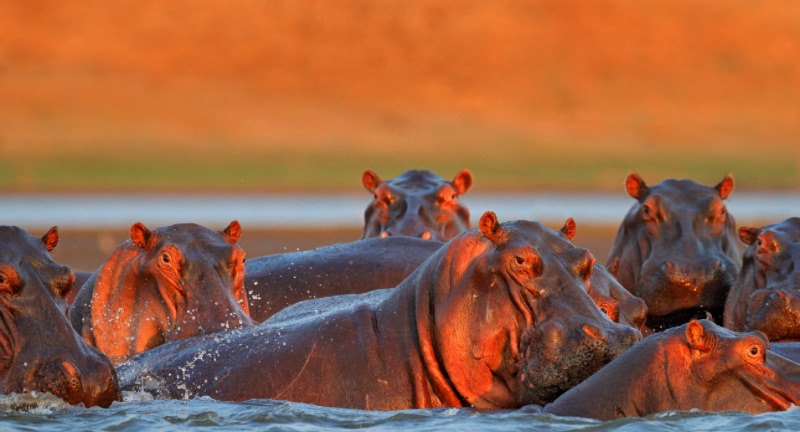
Shutterstock
Hippos held significant cultural importance in ancient Egypt, where they symbolized fertility, protection, and power. The goddess Taweret, depicted with a hippo’s head, was revered as a protector of pregnant women and children. Hippos were both feared and respected, reflecting their dual nature as nurturing yet dangerous creatures. Their presence in the Nile River influenced various aspects of Egyptian art, mythology, and religious practices.
Threat to Agriculture
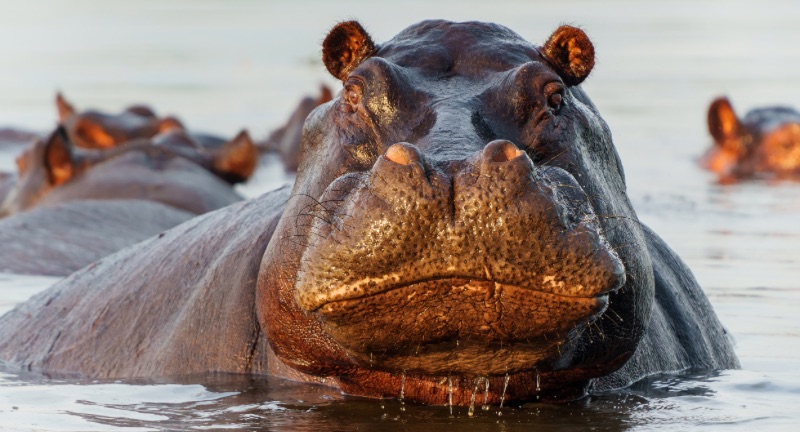
Shutterstock
In some areas, hippos can pose a threat to agriculture by grazing on crops near their water habitats. Their foraging can cause significant damage, leading to conflicts with local farmers who rely on these crops for their livelihood. As a result, hippos are sometimes viewed as pests, and this conflict can lead to retaliatory killings. Balancing the needs of human populations with hippo conservation remains a challenge in regions where these conflicts occur.
Thick Skin
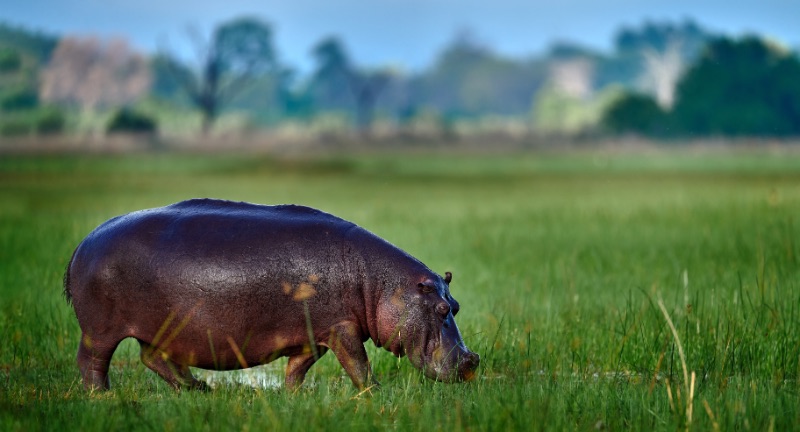
Shutterstock
Hippos have some of the thickest skin of any land animal, measuring up to 2 inches (5 cm) thick in some places. This tough hide offers substantial protection against predators, bites, and environmental elements. Despite its durability, hippo skin is sensitive and prone to dehydration, which is why they spend much of their time in water. To prevent drying out, they rely on water and the secretion of protective oils.
Conclusion
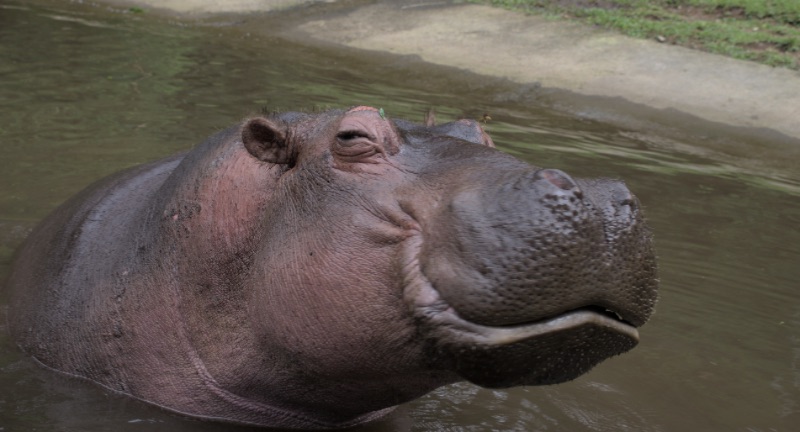
Shutterstock
Hippos might not always be in the spotlight, but they are truly fascinating creatures that play a vital role in their environment. With their surprising connections to marine animals and their significant impact on ecosystems, hippos are full of interesting surprises. Their unique behaviors, adaptations, and sometimes aggressive nature showcase the diversity of wildlife. Whether we see them in the wild or learn about them from afar, hippos remind us of the amazing variety of life on our planet.
























































